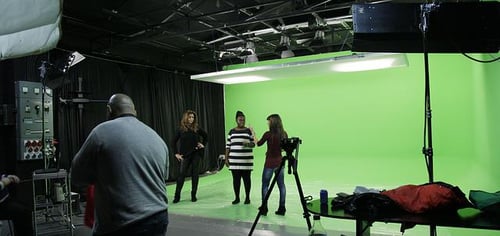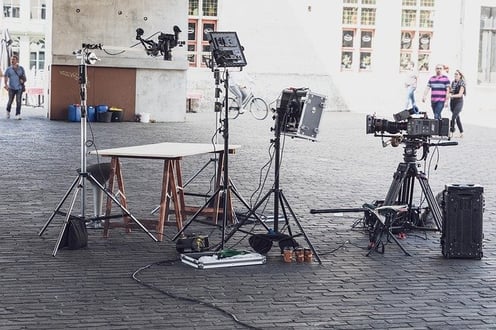Index Content
An audiovisual montage consists of joining pieces of film to create different sequences, generally following a film script or a film director's idea that ends up in a final production. Today we tell you some of the tips to take into account when creating it.
9 tips for a good first audiovisual montage
- be clear about your idea. For example, in the case of a short film, it is useful to associate this format with the idea of an anecdote. If we see that the anecdote we want to tell is something that we would normally be interested in hearing, it means that we are on the right track.
- put together a first written script. When writing the script, it is good to respect the forms of the script according to the time frame of the story. Also, do not include in the script anything that cannot be represented visually.
- watch a lot of films: Although it may seem obvious, it is essential to watch a lot of films and have references, so it is advisable to watch a film, turn down the volume, take out the subtitles and see how one shot fits in with the other.
- make a good technical script: If your plan is to direct the idea you wrote, unless you have a technical knowledge of photography, you will need a director of photography to help you with the strictly visual part of the story. Together with him you will have to develop the technical script, which basically shows how the story that is in the literal script is going to be done in shots.
- make a storyboard- this is a drawing of how the shot is going to be done, and is a very useful reference tool both during the shooting and to see the difficulty of the shot itself.
- shoot the exteriors first. It is generally recommended that you shoot the exteriors first because of the weather .
- alter the order of the story during filming for convenience. It is important to know that the order in which events are filmed does not occur in real time in film.
- don't lose sight of the identity and importance of the shots. Each shot generates a different sensation. It is not the same to show someone crying in a close-up or close-up as in a general shot in which everything can be lost. Each shot has its function.
- don't jump from a wide shot to a close-up, that's a basic law of the audiovisual world.

what are the types of audiovisual editing?
- Narrative editing: it seeks to tell a fact or a story, this can happen either chronologically or with time jumps, which can be flashbacks.
- Ideological montage: it tries to transmit a complex message, generally through the actors and their emotions, although it can also be transmitted with symbols in the environment.
- Expressive montage: this type of technique seeks to synchronise emotions with the rhythm of the scene, such as a fast pace in action scenes, or a slow pace in drama, suspense or romance scenes.
- Poetic montage: the idea of this method is to intensify the emotions of the viewer, it can be achieved by alternating between stories with the same emotional concept. This type of montage can be executed in several stories, even if they are not related, and although there are many contexts in which it can be used, it is generally used in the dramatic context.
- Creative montage: the aim of this montage is to create a structure based on a rhythm that benefits someone the most, this is generally not related to the chronology of the stories, as it only seeks to create a captivating atmosphere for the viewer.
when can an audiovisual montage be considered good?
An audiovisual montage can be considered good or bad, depending on whether or not it manages to transmit what is stated in the script. For this it is essential to choose the right type of audiovisual montage method. On the other hand, a montage can be considered good or not depending on the effects or tricks used to transmit emotions, sensations and meanings. Evaluating beyond whether the trick works or not, how much it has been used, since effects such as black screens or faded screens are tricks used too much in most films.
Although it may not seem like it, using effects used in other films takes away a lot of merit from the directors and the production of the work. To avoid falling into that, it is best to look for a unique and original point of view. The imagination of human beings is infinite, so falling into a ''cut and paste'' of effects would simply be lack of creativity of the director. In fact, in film awards, they value a lot when a work has scenes with new effects created by the same director and his production.

We hope that now that you know the best tips and the most popular types of audiovisual editing, you will get down to work and get a really good one. Thank you very much for reading us!





